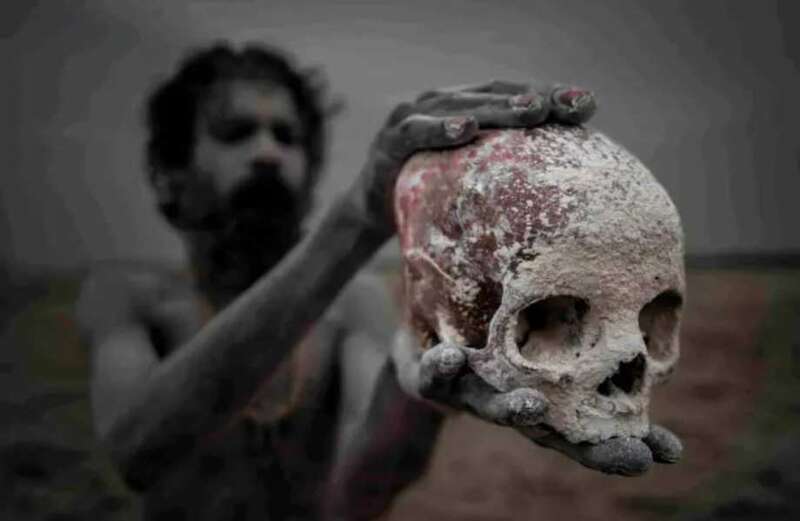A FEMALE photographer has spent a month with a chilling "cannibal cult" but found beauty in them despite the grisliness of it all.
During her time in northern India, Tamara Merino documented the life of the Aghori, who live in cemeteries, use dead bodies as alters and feast on human flesh.


Intrigued by their infamous title of "most feared cannibal in all of India and Nepal", she sought them out while travelling through India in 2016.
Turns out she found them nice and "beautiful", despite the grisliness of it all.
"After some time, I got the chance to meet Aghori guru Baba Ram Mahesh and it was through him that I gained my chance to document the intimate daily life of the cult," she told Refinery29.
 Driver Kumar dies aged 59 in horror crash at Indian national car championships
Driver Kumar dies aged 59 in horror crash at Indian national car championships
"I made relationships with other Aghori and they allowed me to make my work securely and spend a few weeks with them in Varanasi."
Tamara's photos, some of which depict open-air cremation and human remains, can be seen on Refinery29.
"It was an intense but beautiful experience," the photographer said.
"The Aghori live and perform their rituals during the night, so in order to document the cult I regularly had to stay awake all night in the cremation grounds with them."
One of the most feared and revered cults in India, the Aghori members are infamous for their dark and deadly quest for spiritual enlightenment.
"This is why they immerse themselves in environments where death surrounds them as a part of their daily routine," Tamara explained.
"They eat human flesh for specific rituals and use human skulls and bones for ceremonies and jewellery.
"An Aghori is also a master of many spiritual powers, able to cure and save people’s lives from mental and physical illnesses."
Polish photographer Jan Skwara, 38, also decided to document the unsettling lives of the Aghori.
One terrifying image captured the moment a man tipped his head back and raised his hands before drinking from the mouth of a real human skull.
 Man, 98, left to languish in Indian jail after no one paid £116 for his release
Man, 98, left to languish in Indian jail after no one paid £116 for his release
In another picture, a man is seen sitting down with a red human skull perched on top of his own whilst his face is covered in an eerie white dust.
While they worship the Hindu deity, Shiva, Aghori practices are seen as being contradictory to orthodox Hinduism.
The Aghori believe in asceticism, a lifestyle in which one denies themselves of sensual pleasures choosing instead to pursue spiritual goals.
The cult mainly worship Bhairava, the form of Shiva associated with death.
Aghori do not practice idol worship, relying instead on meditation and a combination of alcohol and marijuana to practice greater concentration.






































